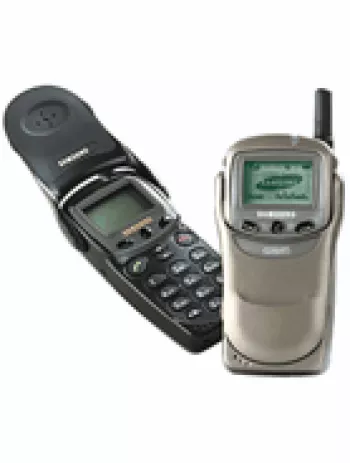
Network Technology
The Samsung i520 supports GSM and HSPA network technologies, making it capable of connecting to mobile networks across different frequency bands. It supports 2G bands (GSM 900 / 1800 / 1900) and 3G bands (HSDPA 2100), allowing for a wide range of connectivity options during its operational period.
Launch and Status
Announced in February 2007, the Samsung i520 was eventually discontinued. This period saw rapid technological advancements in mobile phones, with the i520 representing a mid-2000s smartphone offering before being outpaced by newer models.
Design and Build
Featuring dimensions of 101.7 x 50.5 x 17.9 mm, the Samsung i520 was relatively compact compared to modern smartphones, weighing in at 99 grams. The device supported a Mini-SIM, which was standard for phones of its time. Its lightweight design made it portable and easy to handle.
Display Features
The i520 boasted a 2.3-inch TFT display with a resolution of 240 x 320 pixels, offering 256K colors. The screen size contributed to a screen-to-body ratio of approximately 31.9%, which was considered standard for the era.
Operating System and Performance
Running on Symbian OS 9.2 with Series 60 v3.1 UI, the Samsung i520 was designed with functionality in mind, utilizing a TI OMAP 2430 chipset. Its CPU, a 330 MHz ARM 1136, was paired with a PowerVR MBX GPU, ensuring basic performance levels suitable for the applications and functions supported by the device.
Memory and Storage
Internally, the i520 came with 35MB of storage, which was quite limited by today’s standards. However, it allowed for expansion via a dedicated microSD card slot, making it flexible for users needing extra storage for apps, media, and documents.
Camera Capabilities
The device was equipped with a single 2 MP main camera that supported CIF video recording. For video calls and selfies, it offered a VGA quality front-facing camera. While these specifications might seem modest today, they were adequate for basic photography and video interactions at the time.
Audio and Sound
The i520 included a loudspeaker and supported various alert types, such as vibration and downloadable polyphonic and MP3 ringtones. Notably, it did not feature a 3.5mm headphone jack, which reflected the transitional technological trends in audio output interfaces.
Connectivity Options
Connectivity was limited without built-in WLAN or radio; however, the device supported Bluetooth 2.0 with A2DP and had a USB 2.0 port for data transfer and accessory connections. These features allowed for basic connectivity and peripheral use.
Browser and Internet Functionality
Samsung i520 offered a WAP 2.0/xHTML, HTML browser that enabled basic internet browsing. While not suitable for heavy internet use, it was more than sufficient for accessing standard web pages and online services of the time.
Battery Life
The phone came with a removable Li-Ion 950 mAh battery, which delivered a standby time of up to 150 hours and a talk time of up to 3 hours and 30 minutes. This was typical for phones of that period, offering moderate battery performance for daily activities.
Additional Features and Information
Available in black, the Samsung i520 carried an SAR rating of 0.49 W/kg (head), indicating compliance with health and safety standards. At its release, the device was priced at approximately 140 EUR, positioning it as a cost-effective option for consumers seeking essential smartphone capabilities.
Key Features of Samsung i520
- Supports GSM and HSPA networks.
- Compact dimensions: 101.7 x 50.5 x 17.9 mm and lightweight at 99 g.
- 2.3-inch TFT display with 256K colors and resolution of 240 x 320 pixels.
- Powered by Symbian OS 9.2 with Series 60 v3.1 UI.
- Equipped with TI OMAP 2430 chipset and 330 MHz ARM 1136 CPU.
- Offers expandable storage via a dedicated microSD slot.
- Main camera: 2 MP.
- Includes Bluetooth 2.0 with A2DP support.
- Removable Li-Ion 950 mAh battery with up to 150 hours standby time.
- Available in classic black color.
Weaknesses of Samsung i520
- Lack of support for modern 4G or 5G networks; limited to GSM/HSPA technology.
- Small internal memory of only 35MB, which may not be sufficient for modern app and media storage.
- No Wi-Fi support, limiting wireless internet connectivity options.
- Absence of GPS positioning capabilities.
- Low-resolution display with a small screen-to-body ratio (~31.9%).
- Older Symbian OS, which is no longer widely supported or updated.
- Lack of a 3.5mm headphone jack, which restricts options for audio accessories.
- Basic camera capabilities, with only a 2 MP main camera and VGA selfie camera.
- No option for downloadable applications via an app store, limiting functionality.
- Limited battery life with only up to 3 hours and 30 minutes of talk time.
- Discontinued status, meaning it's no longer in production and may lack support.
- No FM Radio capability, which could be a limitation for media consumption.

View Also
More Phones
All Rights Reserved +14266 Phones © Mobilawy 2025

























